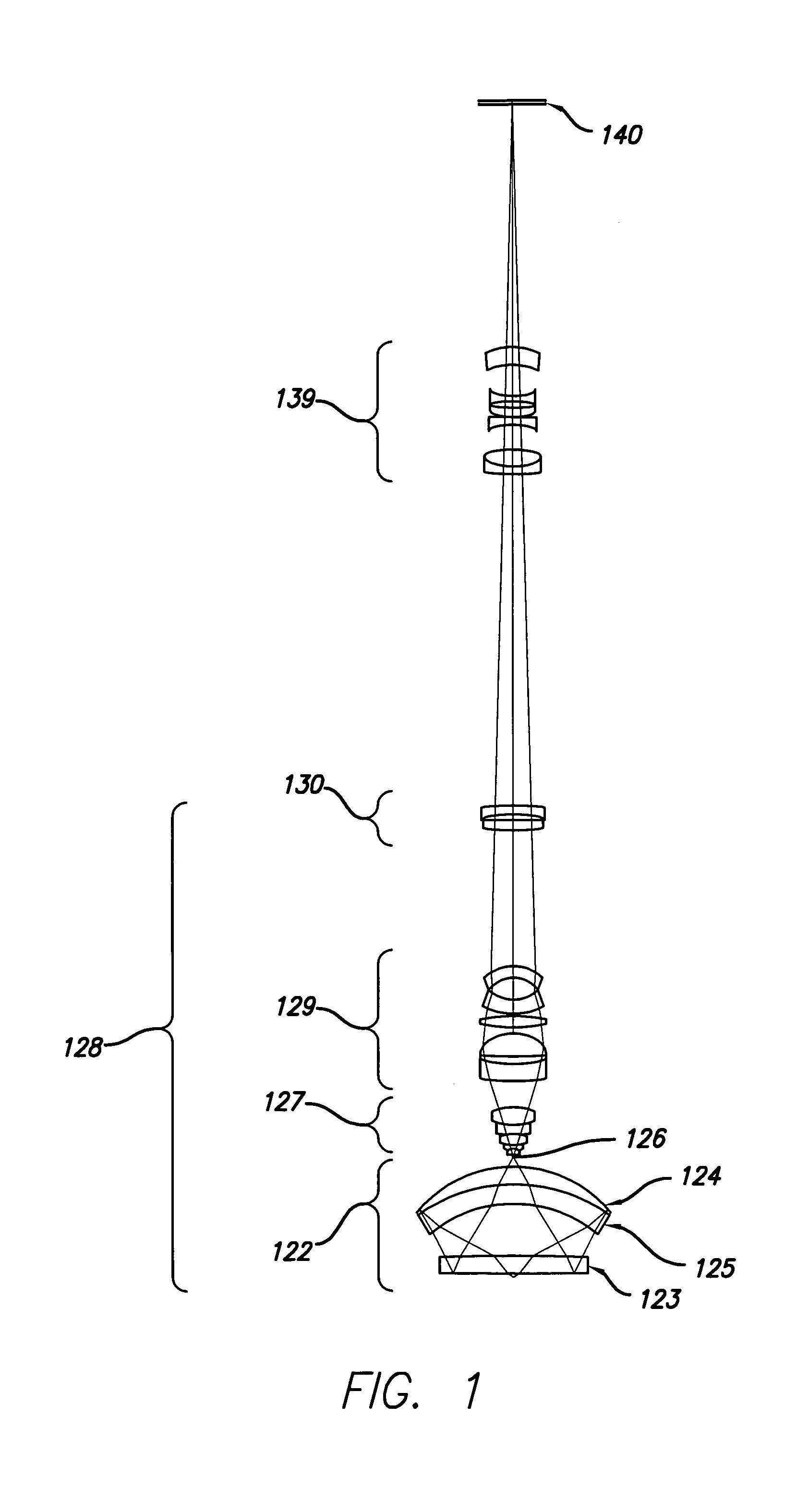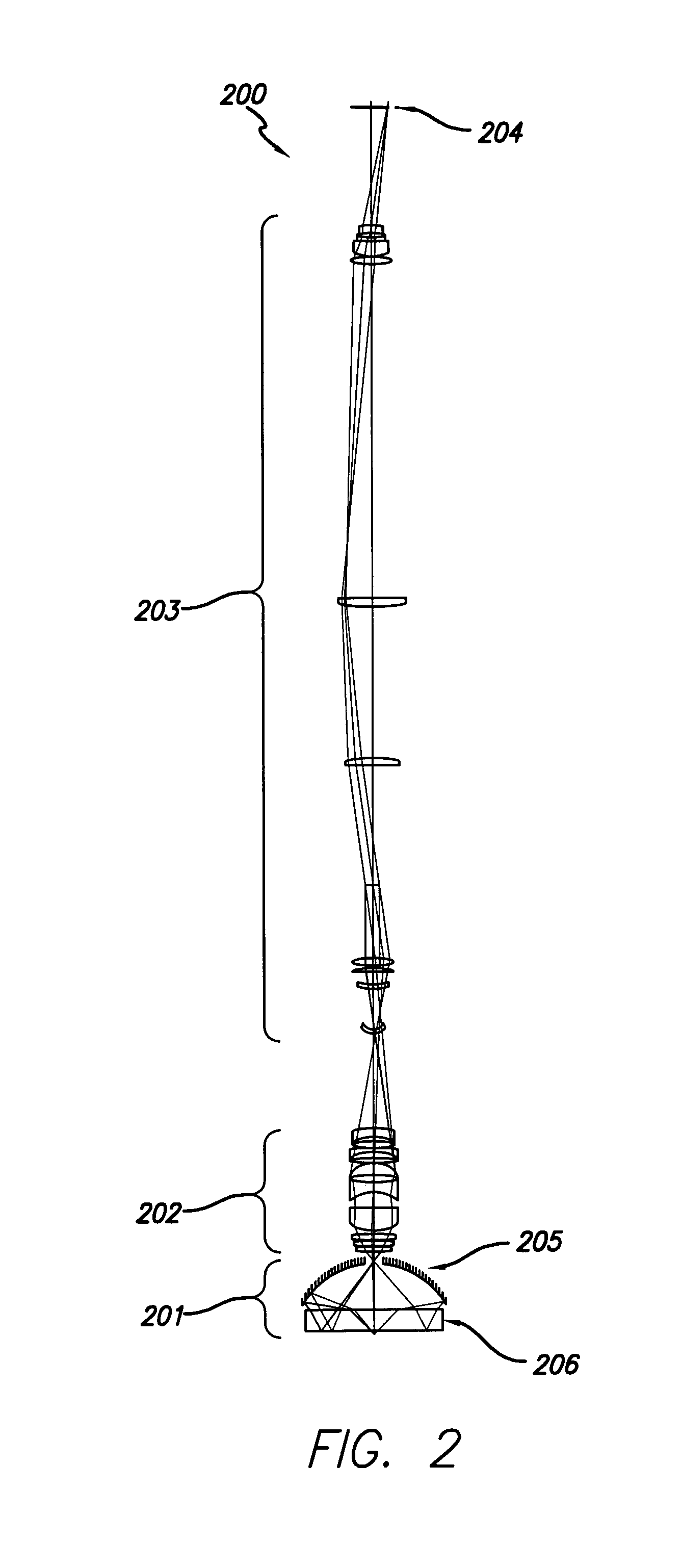Beam delivery system for laser dark-field illumination in a catadioptric optical system
a laser dark-field illumination and optical system technology, applied in the field of optical imaging, can solve the problems of difficult practice, system that tries to combine bright-field and dark-field imaging does not perform either mode as well as single-mode design, and exhibits beam delivery problems
- Summary
- Abstract
- Description
- Claims
- Application Information
AI Technical Summary
Benefits of technology
Problems solved by technology
Method used
Image
Examples
Embodiment Construction
[0029]The present design is an apparatus that can support both broad-band bright-field inspection and laser dark-field inspection techniques without compromising the performance of either technique. To accomplish this enhanced dual-mode inspection capability, both inspection techniques use the same imaging system, detection system, and autofocus system. The illumination systems employed differ from those previously available, and a Fourier filter or other pupil aperture is employed for normal incidence laser dark-field modes. A detector with a suitable dynamic range may be employed in the detection system to handle the high dynamic range signals produced by the normal incidence dark-field inspection technique.
[0030]The present design is useful for beam delivery for illuminating surfaces for optical inspection with laser sources. The design is particularly suited for use with optical systems that have a central obscuration which blocks light from traversing along the optical axis of ...
PUM
 Login to View More
Login to View More Abstract
Description
Claims
Application Information
 Login to View More
Login to View More - R&D
- Intellectual Property
- Life Sciences
- Materials
- Tech Scout
- Unparalleled Data Quality
- Higher Quality Content
- 60% Fewer Hallucinations
Browse by: Latest US Patents, China's latest patents, Technical Efficacy Thesaurus, Application Domain, Technology Topic, Popular Technical Reports.
© 2025 PatSnap. All rights reserved.Legal|Privacy policy|Modern Slavery Act Transparency Statement|Sitemap|About US| Contact US: help@patsnap.com



